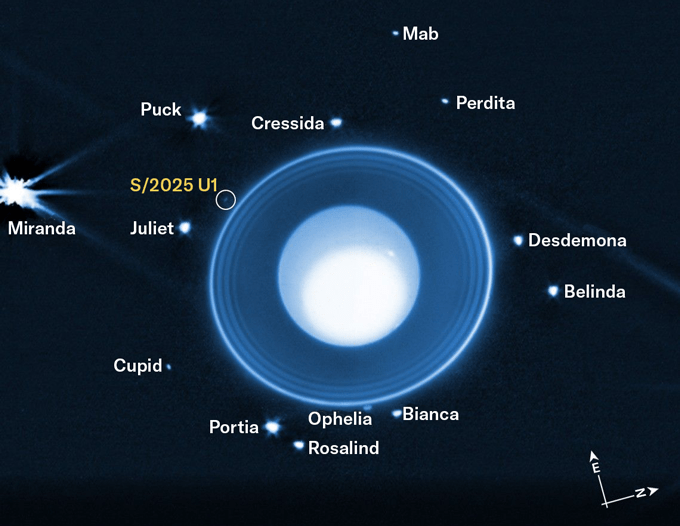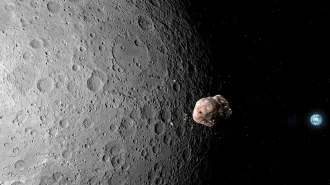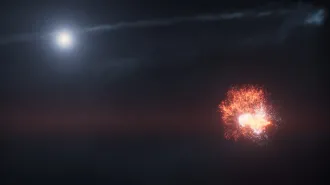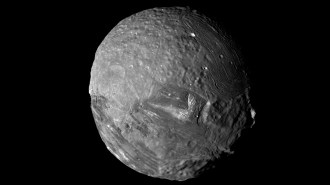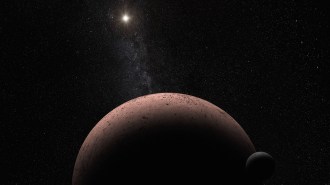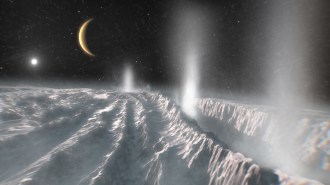NASA’s Webb telescope spotted a new moon orbiting Uranus
This is the planet’s 29th identified moon
Researchers spotted a small, faint moon (circled) orbiting Uranus in a series of images captured over nearly seven hours by the James Webb Space Telescope.
NASA, ESA, CSA, STScI, M. El Moutamid (SwRI), M. Hedman (University of Idaho). Animation: J. DePasquale (STScI)
